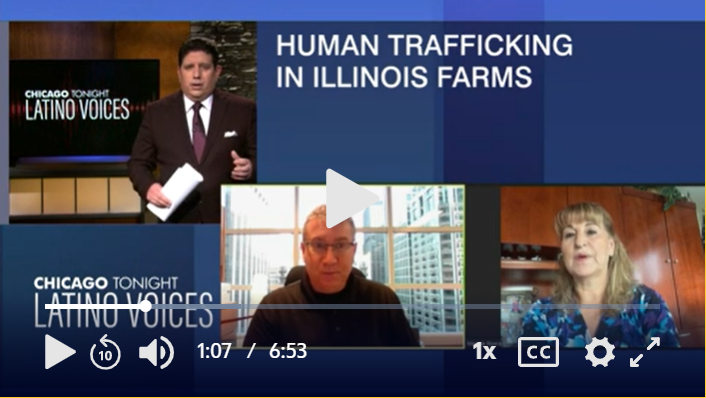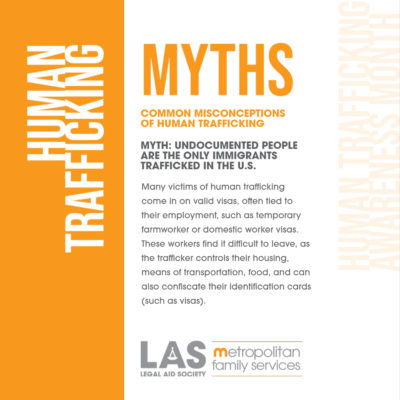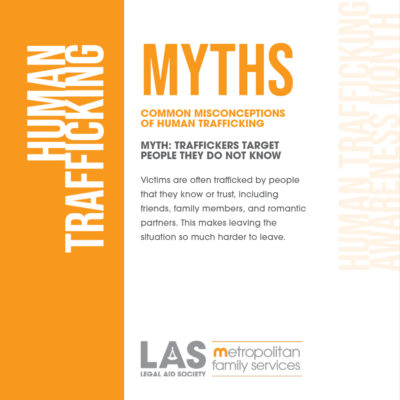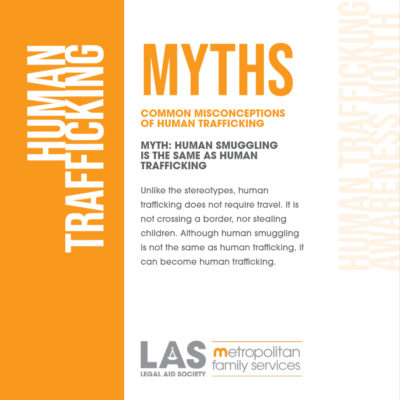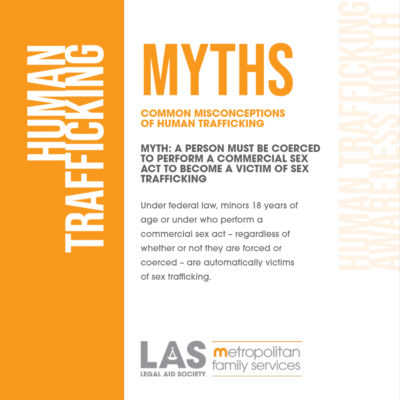January is Human Trafficking Awareness Month
The Legal Aid Society (LAS) provides victim-centered and trauma-informed free legal services to survivors of human trafficking from diverse communities in the Chicago metropolitan area, through our Human Trafficking Initiative. Learn more about the Human Trafficking Initiative’s work
For Human Trafficking Awareness Month, our LAS staff shares resources to understand trafficking, how to recognize the signs, and how to help victims of exploitation.
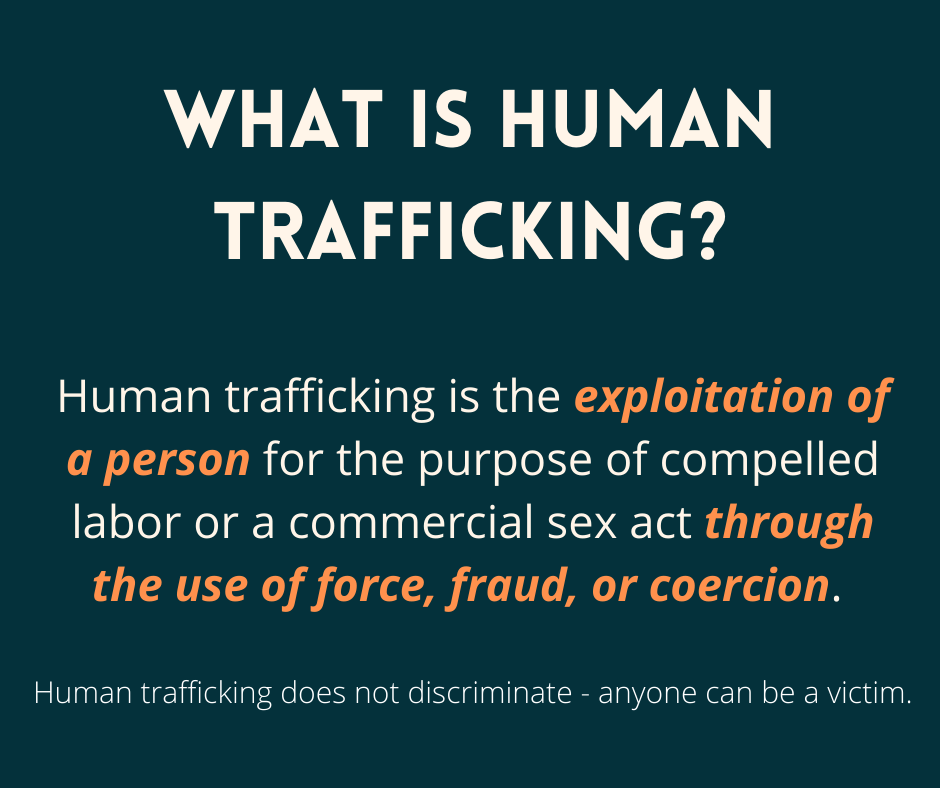
Learn more about human trafficking with the Cook County Human Trafficking Task Force.
Anyone can be a victim of human trafficking.
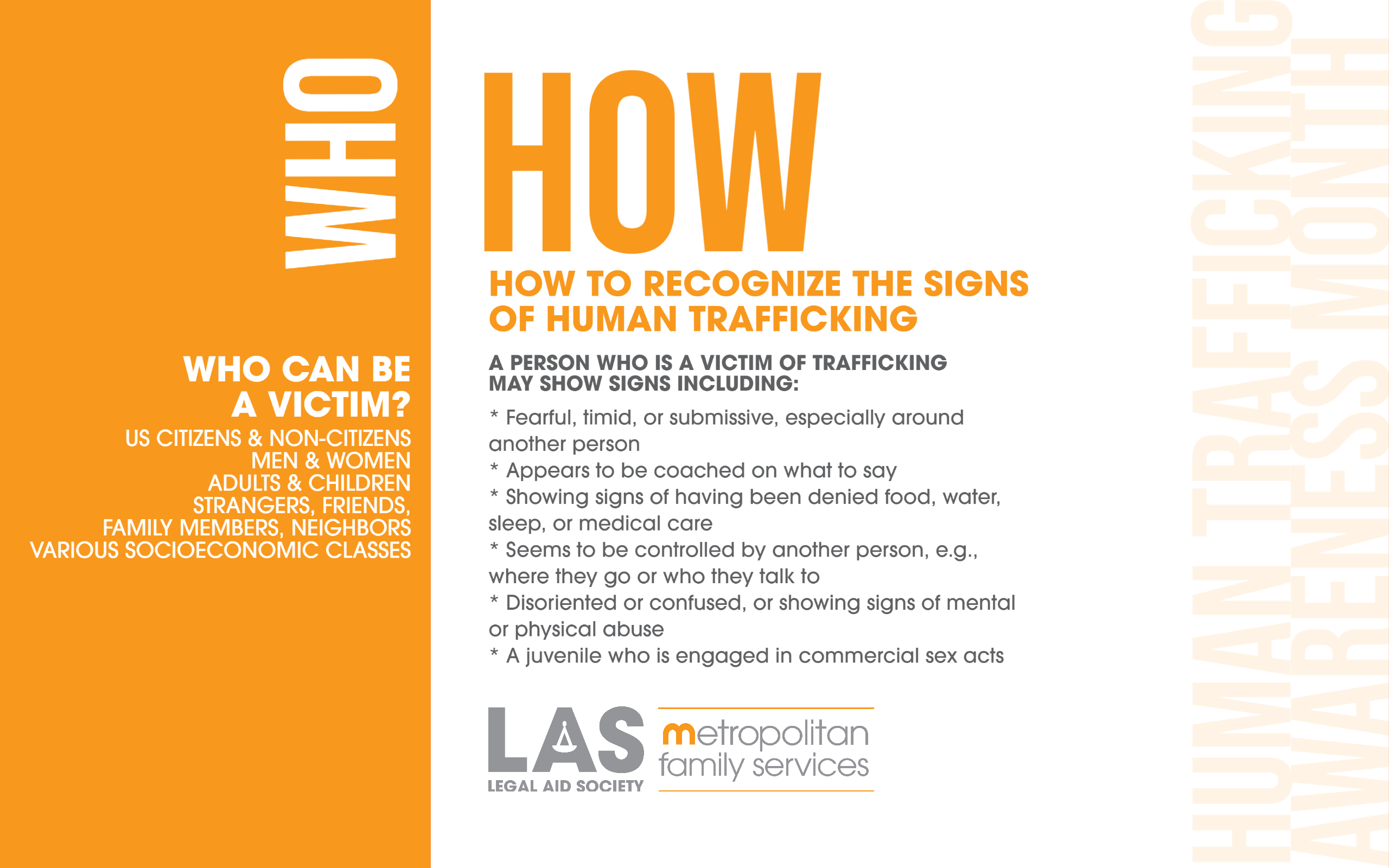
How can we recognize the signs of human trafficking?
A person who is a victim of trafficking may show signs including:
- Fearful, timid, or submissive, especially around another person
- Appears to be coached on what to say
- Showing signs of having been denied food, water, sleep, or medical care
- Seems to be controlled by another person, e.g., where they go or who they talk to
- Disoriented or confused, or showing signs of mental or physical abuse
- A juvenile who is engaged in commercial sex acts
How can we help?
To report a tip or to find help:
- In the Chicago area: call the STOP-IT Hotline at (877) 606-3158
- Anywhere in the United States: call the National Human Trafficking Hotline at (888) 373-7888
What does trafficking look like in Illinois?
In 2019, in Illinois alone the National Human Trafficking Hotline identified:
- 434 victims
- 115 traffickers
- 53 trafficking businesses
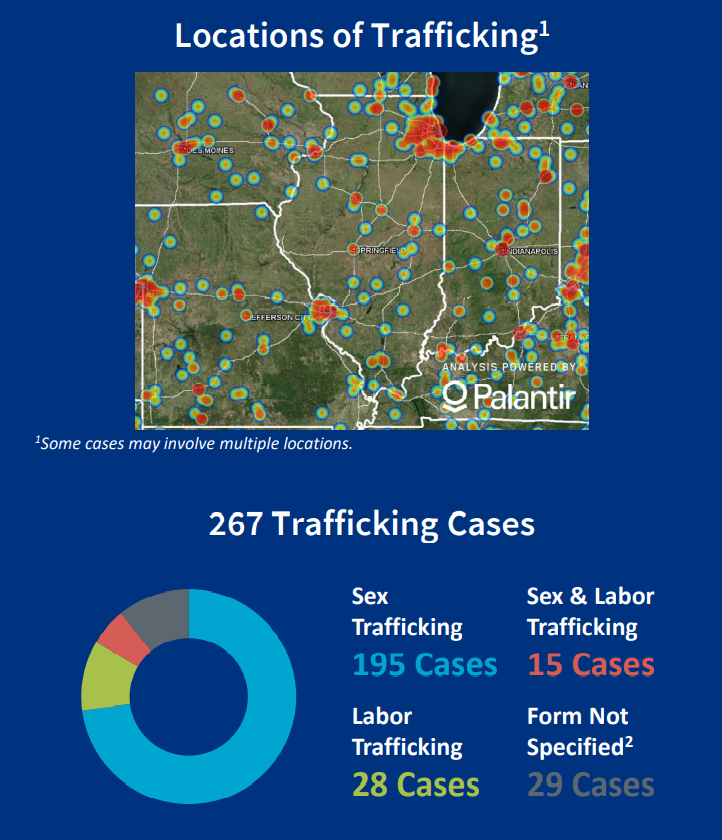
These are startling numbers! Unfortunately, these numbers have jumped significantly during the pandemic, especially in labor trafficking cases, as the need for immigrant farm workers and domestic workers increased.
Hear about from Miguel Keberlein Gutierrez, Executive Director of the Legal Aid Society, during a recent appearance on WTTW’s Latino Voices:
“There’s a spectrum really along the lines of what is labor abuses that on the final end of it is labor trafficking,” Keberlein Gutierrez said. “It’s truly when there’s force, fraud, or coercion that keeps a person basically indentured to an employer in some way or fashion. And we see certainly a lot of it in the agricultural community.”
“So when it comes to trafficking, there are people who may be in situations where they’re trafficked for a certain period of time, then they’re no longer in that trafficking situation, then they re-enter. But we do know that within the agricultural community, there’s a high percentage of people who, when asked about situations, have identified some situation that would lead to trafficking.”
Human Trafficking Myths and Misconceptions
- Myth: Undocumented people are the only immigrants trafficked in the US.
Many victims of human trafficking come in on valid visas, often tied to their employment, such as temporary farmworker or domestic worker visas. These workers find it difficult to leave, as the trafficker controls their housing, means of transportation, food, and can also confiscate their identification cards (such as visas). - Myth: Traffickers target people they do not know.
Victims are often trafficked by people that they know or trust, including friends, family members, and romantic partners. This makes leaving the situation so much harder to leave. - Myth: Human smuggling is the same as human trafficking.
Unlike the stereotypes, human trafficking does not require travel. It is not crossing a border, nor stealing children. Although human smuggling is not the same as human trafficking, it can become human trafficking. - Myth: A person must be coerced to perform a commercial sex act to become a victim of sex trafficking.
Under federal law, minors 18 years of age or under who perform a commercial sex act – regardless of whether or not they are forced or coerced – are automatically victims of sex trafficking.

